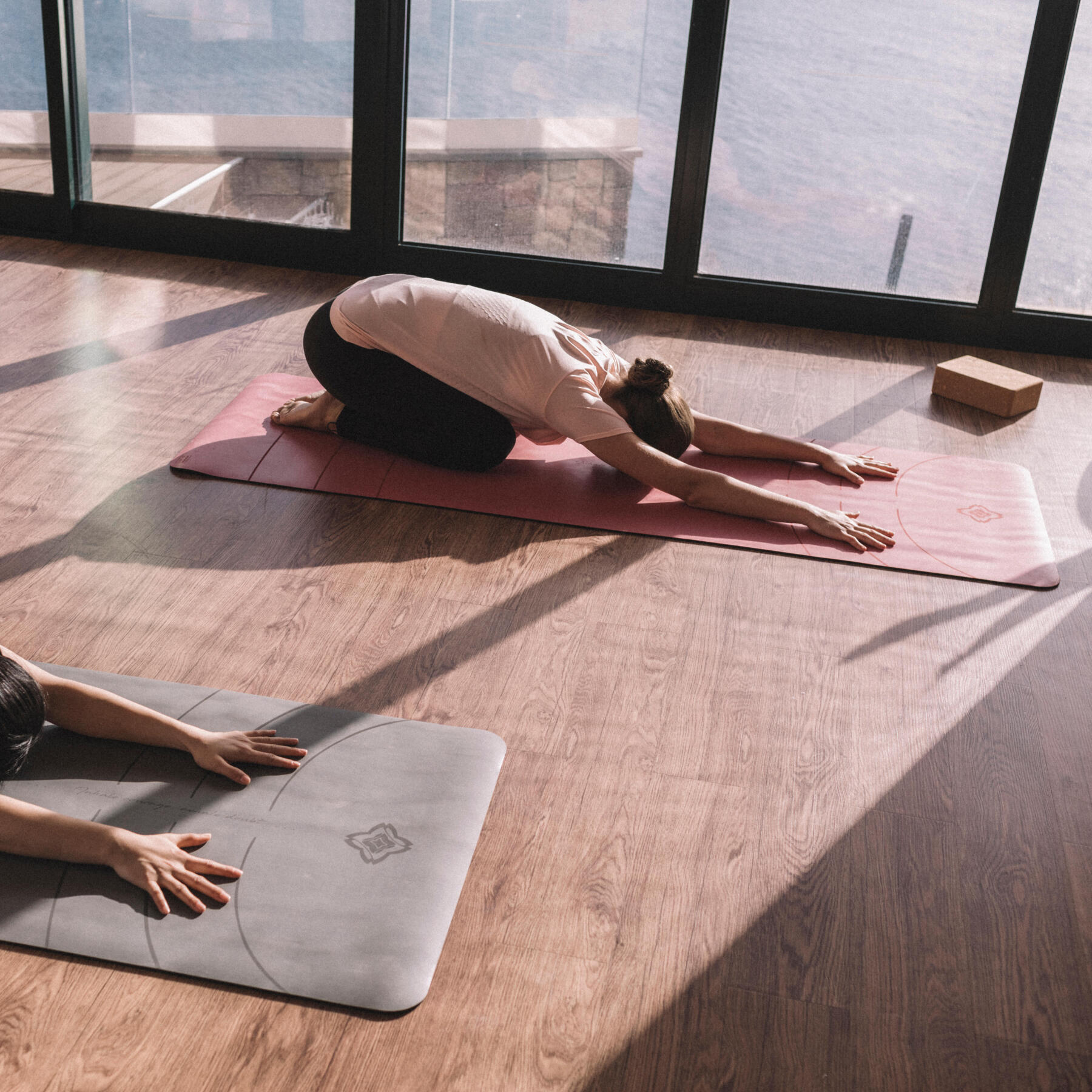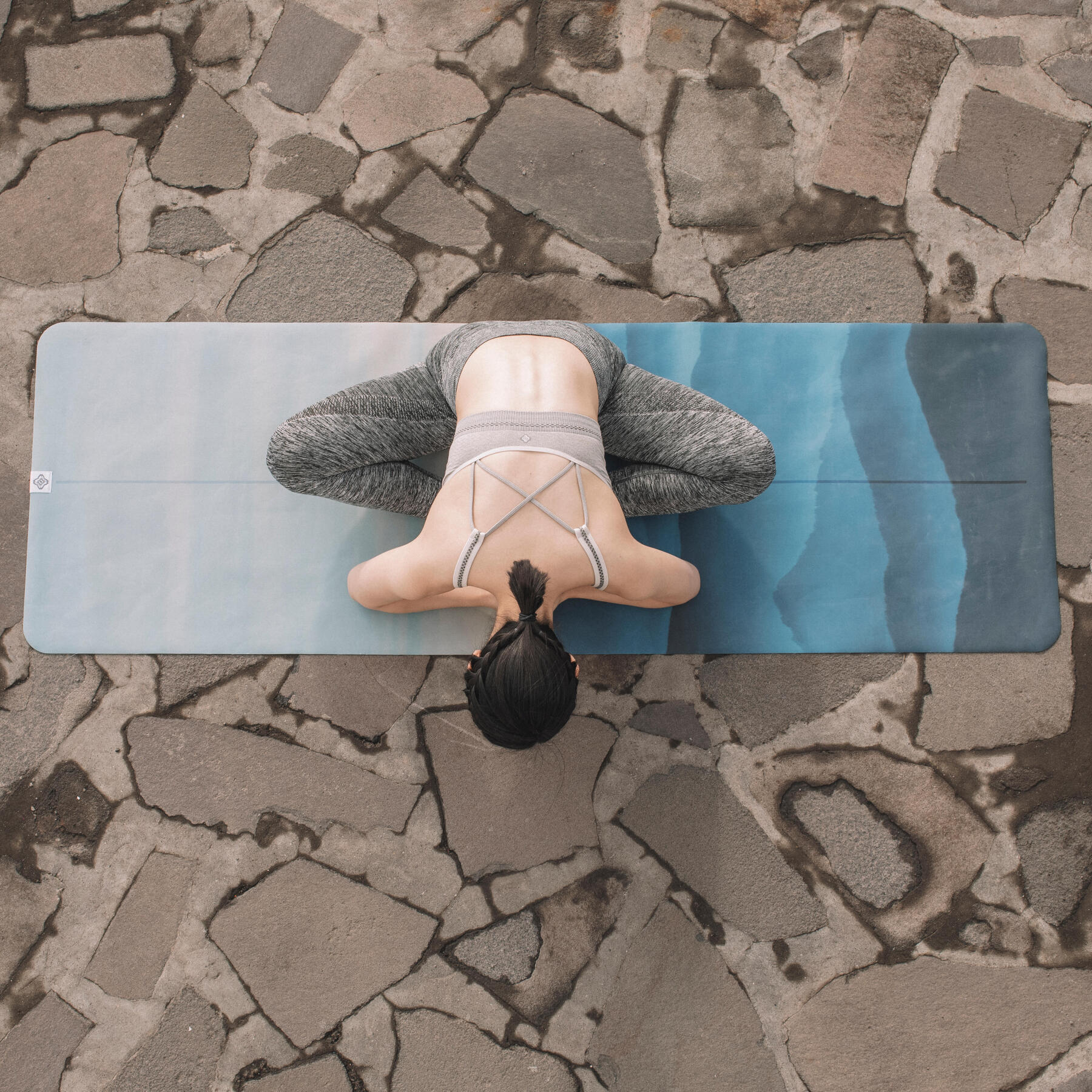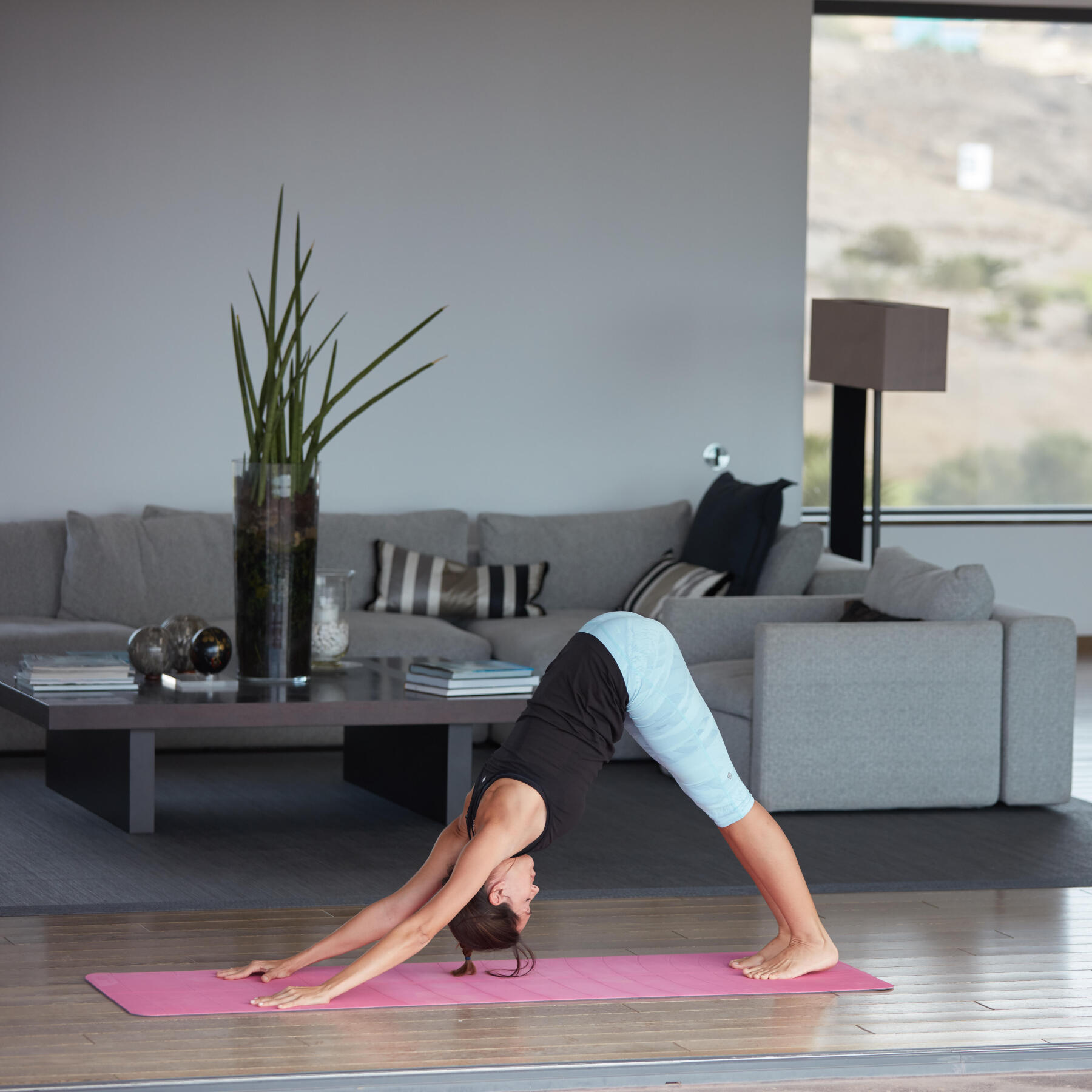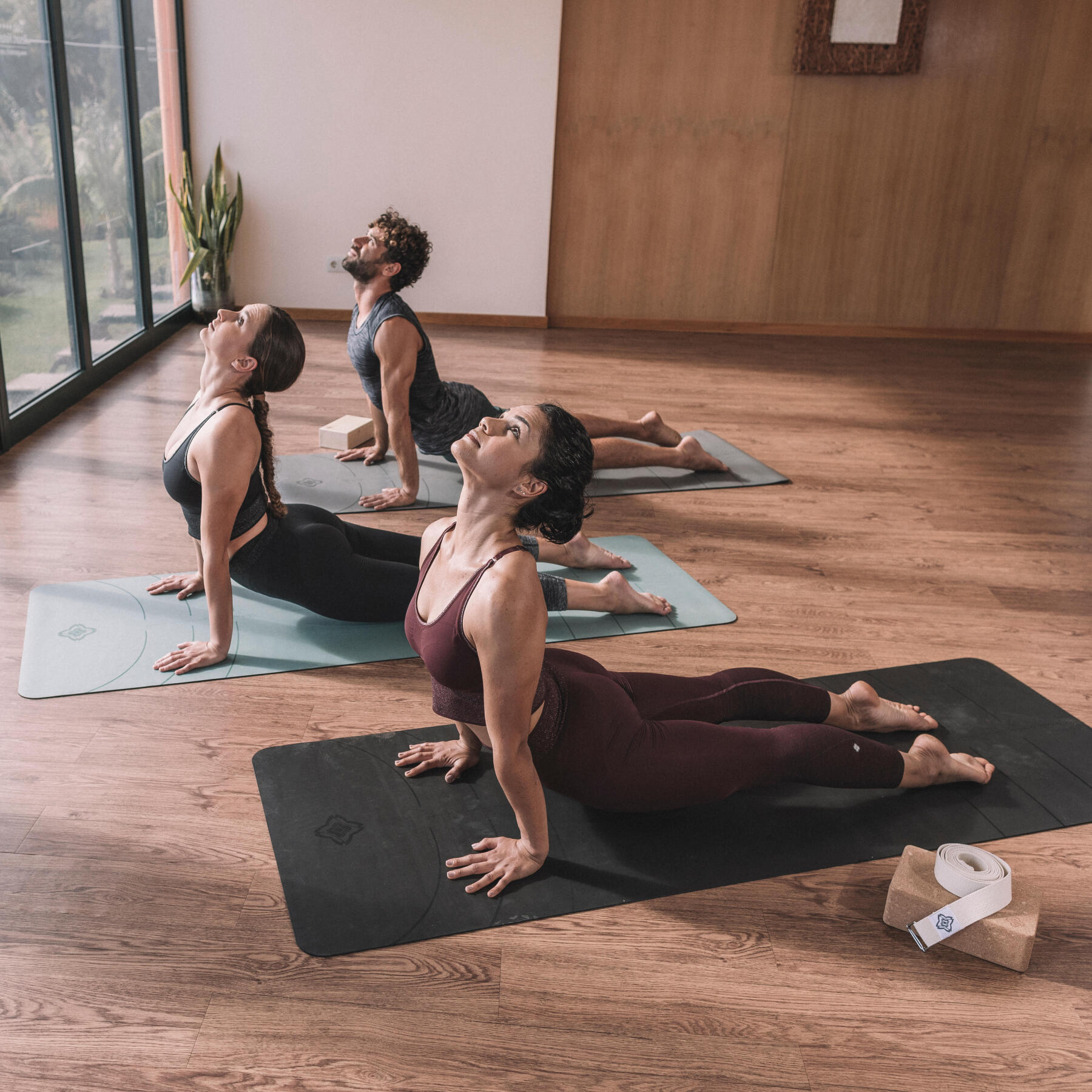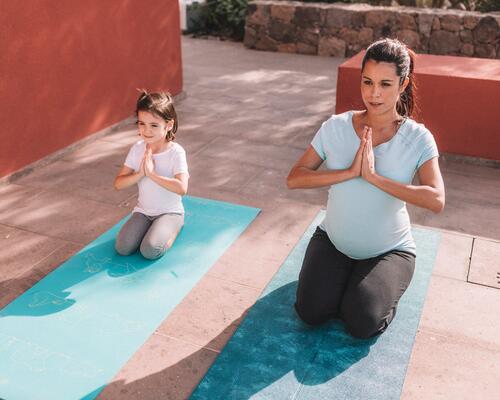1. Child's pose (balasana) - to streeeeeeeeetch the spine
- Kneel down with your arms outstretched and on the mat
- Your knees should be chest’s width apart
- Seat your bum back onto your heels while keeping your hands on the mat
- Slowly walk your hands away from your body, towards the top of the mat, while lowering your torso to the ground
- Keep your back straight throughout
- Once you have reached the limit of how low your torso can sink, rest your head on the mat (if it is within reach), or on a yoga block
- Remember to keep your neck in a neutral position i.e. not tensed upwards or downwards
- You should feel a spinal stretch from the base of your skull to your tailbone
- Stay in this position for a few minutes, and remember to breathe.~

